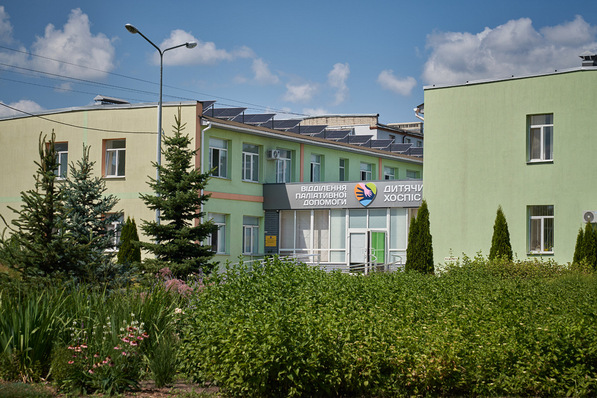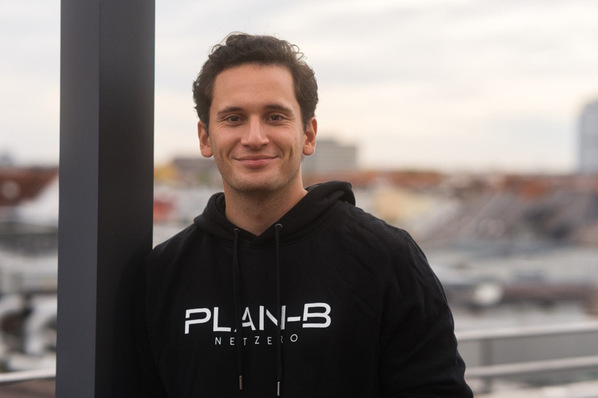Following the bankruptcy of Sunways, little had been heard from Roland Burkhardt, the man behind this manufacturer of solar panels and inverters based in Konstanz am Bodensee. But last year he reappeared and the results of unseen labours became visible: Centurio, the new hybrid inverter, and Domus, the storage system, were presented in Munich. The Centurio was even awarded the first prize at the prestigious storage trade fair EES Europe.
Smart modular system for larger storage batteries
The hybrid inverter has a capacity of 10 kilowatts and can be combined with battery modules between 7.2 and 32.6 kilowatt hours. The battery connects at 400 volts. In order to compensate for unbalanced loads and help to take the strain off the grid, it can, if necessary, feed in to all three phases asymmetrically on the AC side. The system comes with a smart metre or a sensor that monitors the flow of electricity at the point of connection to the grid.
Furthermore, the inverter is capable of providing emergency power over all three phases. From solar generator to grid, it is 98.1 percent efficient. Surprisingly, this very high degree of efficiency is achieved even at a partial load of 25 percent. At 10 percent partial load it still manages a DC-AC efficiency of 97 percent.
If the Domus batteries are integrated into the system, the overall efficiency is still 95.4 percent, from a partial load from the battery of 20 percent. The entire system is ready for installation upon delivery.
The hybrid inverters and batteries can be combined in any way desired, so the storage capacity that is managed is correspondingly greater. This creates a modular system that can be customised to fit even very high storage and output demand.
Great expectations
This has set high expectations for the facilities in Konstanz as well as Kreuzlingen in Switzerland will start providing inverters again. Energy Depot has presences either side of the Germany-Switzerland border. Series production of the new inverters had started late last year, and now Energy Depot has moved into new facilities in Konstanz, where 15 staff are rebuilding the business.
Production will be concentrated in Konstanz, where a large part of Sunways’ development team was retained. “In 2017, we established series production and delivered the first storage systems ‘Made in Konstanz’,” Peter Winter, head of sales at Energy Depot, says. At the time of the Centurio’s launch in June 2017 in Munich, he was product manager. He has been with the company since January 2017 and is now involved in establishing a professional sales department.
Goal for 2018: 1,000 units
This year he hopes to sell 1,000 systems, chiefly via installing company partners and bulk customers such as (municipal) utilities. “We will expand our business in two or three stages, i.e. go directly through installing companies,” Winter explains. “We want to be attractive partners to them.”
Alongside the battery inverter, the storage package Domus is also interesting. It will be available with two types of battery cells. In order to keep their supply base as wide as possible right from the start, Energy Depot has qualified two different suppliers.
Two suppliers of lithium cells
Most storage providers currently depend on just one supplier. That is risky and some have already faced the consequences. For the Domus system, the cells come from Asia and are either 72 or 80 ampere hours. All cells are constantly monitored: operating temperature, voltage and current. In case of emergency, the battery packs can switch off automatically.
Now Energy Depot is about to take the next step: “We would like to also be compatible with other batteries,” Winter envisages. “That will allow installing companies to also combine other batteries with our inverters.”
The Domus battery modules have an output of between 2.5 and 10 kilowatts. About two thirds of the inverters that were sold together with such a battery. Peter Winter is sure that this will increase in the future. “We have been able to win a number of installing companies as sales partners,” he says. “We are hiring sales representatives specifically to generate greater turnover.”
Simple to upgrade to off-grid mode
In Switzerland, the three-phase storage unit with its excellent efficiency even at low partial loads is supported by state subsidies. Also, there is great demand for its backup functionality. “The inverter separates from the grid in accordance with VDE 4105,” Peter Winter explains. “Then it actually works as an off-grid system. But we will also offer the Centurio without the off-grid functionality, although the customer will always be able to upgrade the system later.”
For units in crucial situations, the few seconds of switch-over time can be bridged by a UPS box. By combining output monitoring and grid separation, the system no longer requires its own switching unit.
The inverter is capable of actual off-grid operation, and if combined with a high-capacity battery even for longer periods of grid failure or even completely autonomous. The energy storage system is also capable of tolerating high start-up currents and a short-term dip in voltage is levelled out immediately, thereby always keeping the island grid stable. In order to achieve this, the engineers have invested a great deal of time and brains.
Quick and easy start-up
Overall, starting up a system is quite quick and easy, which is important for installing companies: Not to lose any time and keep the installation cost as low as possible, which only adds to the cost of the actual hardware. Unlike the domestic storage market, in commercial storage competition is much more based on prices. A complete system including two Domus 3.6 and a 10-kilowatt hour inverter is going to cost the installing company about 6,800 euros, so roughly 1,000 euros per kilowatt hour.
Battery prices are currently between 500 and 600 euros per kilowatt hour. Taking advantage of economies of scale, Energy Depot seek to bring that down to well below 500 euros.
For now, the system is to be sold in Switzerland and Germany, and in the near future also in the Austrian market. “For South Africa and the MENA region we intend to focus on off-grid systems,” Peter Winter states. “That also limits the bureaucracy involved in getting access to the grid.” Market development is to be achieved through sales partners.
Final assembly of the storage units and inverters is done in Konstanz. The electronics (PCBs) come from European suppliers, the lithium cells from China. The target for this year is 1,000 energy storage systems. At the current stage of development, manufacturing up to 5,000 systems per year is well within reason. (HS)
Stay informed, get our newsletter twice a week.
Register here: http://www.pveurope.eu/Newsletter
Read more on energy storage in Europe:
http://www.pveurope.eu/News/Energy-Storage/Philipp-Schroeder-of-Sonnen-We-go-onwards-and-upwards
http://www.pveurope.eu/News/Energy-Storage/Senec-Italy-expands-distribution-of-energy-storage-systems
http://www.pveurope.eu/News/Energy-Storage/UK-distribution-launch-of-MyReserve-Matrix-battery-at-Ecobuild
http://www.pveurope.eu/News/Energy-Storage/Storage-advice-Island-inverters-are-key-to-system-speed
http://www.pveurope.eu/News/Energy-Storage/Installed-lithium-ion-battery-costs-below-USD-200-per-kWh







